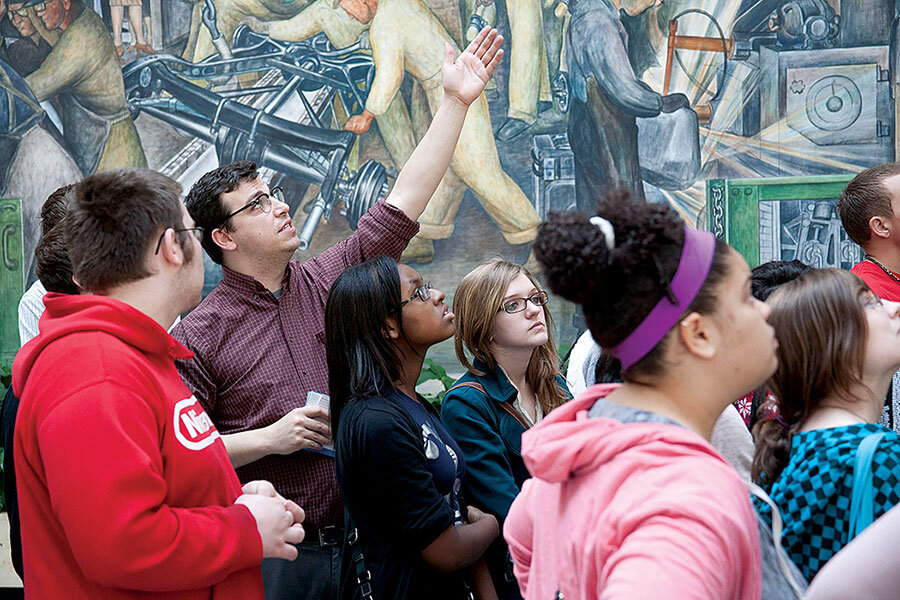The Met’s not free. How do other museums do it?
New York’s Metropolitan Museum of Art started charging out-of-state visitors this month. Met chief executive officer Daniel Weiss says the high-profile tweak to a decades-old pay-as-you-wish policy was a matter of ensuring financial stability.
Some museums, however, make free admission work. When museums go free, they hope to reach a larger, more varied audience. They fall back on public and philanthropic funds to fill the gap. Directors like Kaywin Feldman at the Minneapolis Institute of Art talk about not just those numbers, but about connections to their communities. “I used to always subscribe to the idea that people pay for what they value,” said Ms. Feldman. The MIA went admission-free in 1989. Now Feldman believes that “if you’re free, people can weave the museum into their daily lives.”
In 2012, voters raised property taxes to fund the Detroit Institute of Arts after it offered to eliminate entrance fees for visitors from three Detroit-area counties. Campaigning for the tax increase “forced the museum to articulate its mission and values to the broader community,” said museum consultant Susie Wilkening, who estimates admission typically makes up 5 percent of art museums’ budgets. Dave Flynn, public affairs director at the Detroit Institute of Arts, said his museum is intent on being “relevant to what the community wants.”
Dropping admission can attract donors and inform a broader approach. Free bus transportation for student and senior museumgoers came along with free admission in Detroit. Baltimore’s Walters Art Museum, for example, offers gallery meditation sessions. Walters executive director Julia Marciari-Alexander says running a ticketing system and other costs make charging admission only minimally profitable. Visitors freed from fees, as they have been at the Walters since 2006, can engage in art without “a transaction,” she said. Instead, “it’s a conversation. It’s a relationship.”





